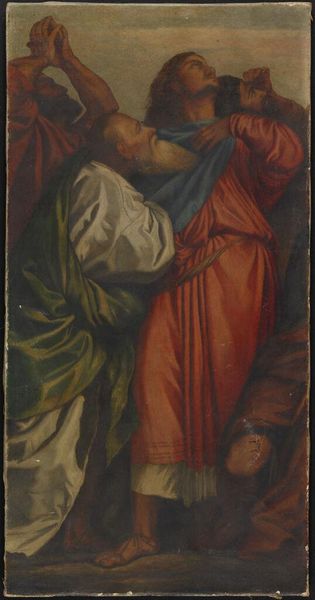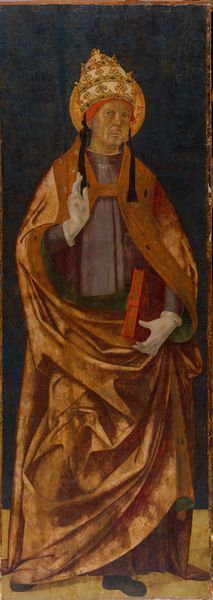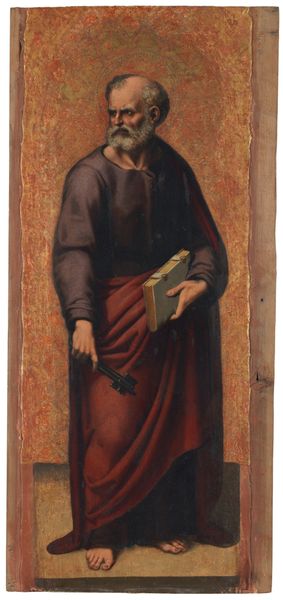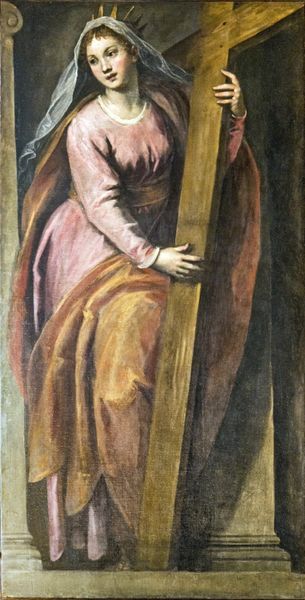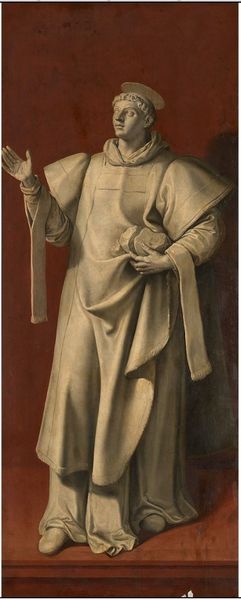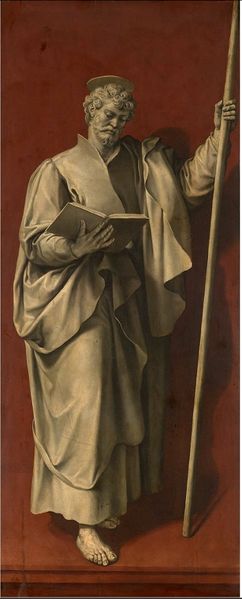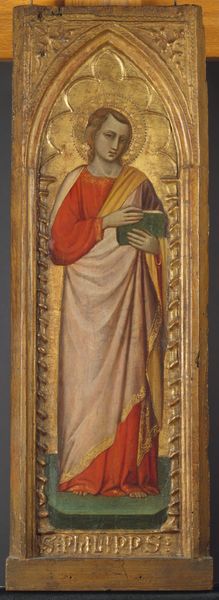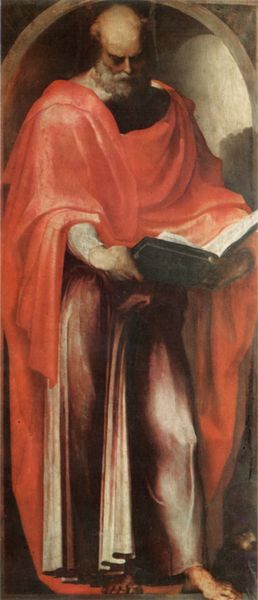
painting, oil-paint
#
portrait
#
woman
#
painting
#
oil-paint
#
figuration
#
11_renaissance
#
oil painting
#
12_15th-century
#
history-painting
#
italian-renaissance
#
portrait art
#
fine art portrait
Dimensions: 113.8 x 54.4 x min. 3.2 cm
Copyright: Public Domain
Editor: Here we have Macrino d'Alba's "The Meeting at the Golden Gate," painted around 1493 or 1494 using oil. It's quite striking, actually. The figures seem almost frozen in this very formal embrace. I’m particularly drawn to the use of color and line. What elements stand out to you when you view it? Curator: Primarily, the painting’s formal composition strikes me. Notice how the artist has arranged the figures within the arched frame. The verticality emphasizes a certain solemnity, while the converging gazes create a dynamic tension. The rendering of fabrics through light and shadow creates linear rhythms that add depth and structure to the picture plane. Do you observe how color acts not merely descriptively, but also structurally? Editor: I do, yes! Especially in the drapery, how the golds and browns create a kind of architectural element. Are you suggesting the painting’s meaning is constructed through these formal elements? Curator: Precisely. The arrangement of line, color, and shape precedes any narrative content we might ascribe. How the folds cascade creates a secondary composition within the overall image. Note the geometric rigor; what might seem emotional becomes intensely formal. Do you agree? Editor: Yes, I see what you mean. Initially, the embrace felt very human. But now, focusing on these elements you've described, I am recognizing it more as a calculated composition than as an organic moment. Thanks! Curator: Indeed. Understanding how these fundamental visual structures operate offers us profound insights beyond mere representation. A deeper structural awareness encourages us to question how forms themselves construct our understanding of the work, wouldn't you agree?
Comments
No comments
Be the first to comment and join the conversation on the ultimate creative platform.
